Three emerging favourites at Art Brussels 2022
Three picks from the emerging stratum of the art market, found in the first post-pandemic edition of Art Brussels
Arguably, the pandemic hit Art Brussels harder than it did other contemporary art fairs. Between multiple postponements and cancellations, 2020 and 2021 were tough years for the Belgian fair, which had to juggle with alternative options—an Antwerp edition last December, Brussels Art Week, online initiatives—before coming back in its real-life potential in April 2022. Walking through its classy scenography during the opening day, maskless—the Belgian government recently lifted the obligation to wear face masks indoors—happiness was in the air. Only the crowded Venice Biennale’s opening has felt so socially necessary for the art world in the last couple of weeks.
After a thorough visit, we can say that the signature informality of Art Brussels survived the pandemic, and so did its reputation as a place to delve deep into art’s intellectualisms rather than indulge in compulsive shopping. We here list three of our favorite proposals and stories at the fair, especially focusing on young art and galleries.
Discovering the new career of Claas Reiss
Until recently, Claas Reiss was an investment banker in Hong Kong. Today, aged 53, he runs an art gallery in London that bears his name. When the finance firm he co-founded was acquired by a much larger conglomerate, he understood it was time to change his life. Already an art collector, he first devoted himself to painting for some time, not with the intention to become an artist but to better understand how an artist thinks. In 2020, the day before London experienced its first lockdown, he inaugurated his first exhibition, which had to close the next day.
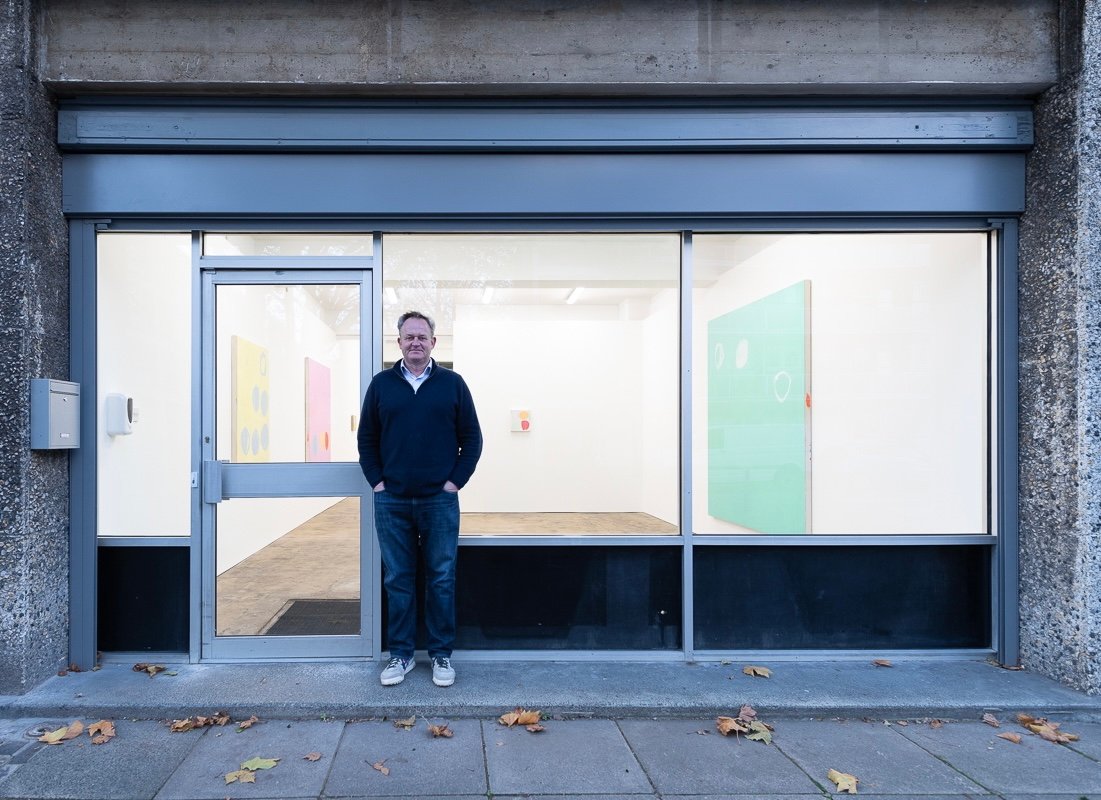
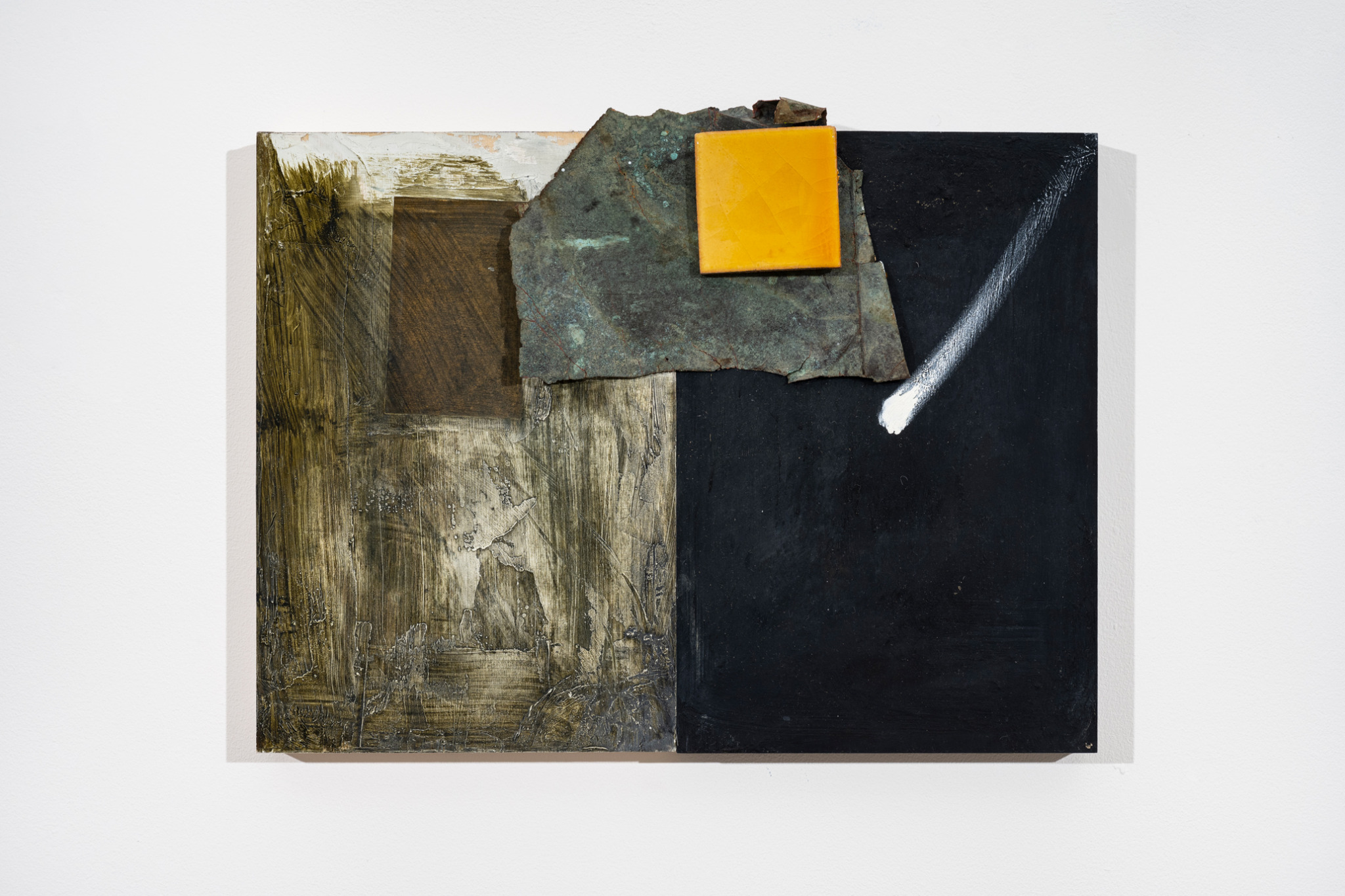
The following step for him was the 2022 edition of Art Brussels, which was also the first fair in which Claas Reiss took part. He introduced himself to the refined Belgian public with works by Daniel Graham Loxton (b. 1987) and James Collins (b. 1992), two artists who can’t but confirm the maturity of Reiss’s eye. Our way of wishing him good luck is to remind him that even Leo Castelli, probably the greatest dealer of the last century, opened his gallery in New York in 1957 when he was over fifty. The rest is history.
Willa Chasmsweet Wasserman in real life at François Ghebaly
We’ve been following Willa Chasmsweet Wasserman (b. 1990) for some time now, publishing an early essay on their work on the occasion of their 2020 show at Good Weather in Chicago. Coming across three of their recent paintings on brass at the François Ghebaly‘s booth at Art Brussels was an inspiring and longed for surprise. Painting on metal is generally associated with the idea of highly detailed works applied in thin layers. Wasserman breaks with this art historical expectation, opting instead for rough strokes and slight matterism in order to only suggest an idea of figuration. Three bodies do seem to emerge from the sleek surface in the works at the fair. Hues blend with the color of the metallic support, an aspect of Wasserman’s painting that doesn’t come across in digital reproductions.

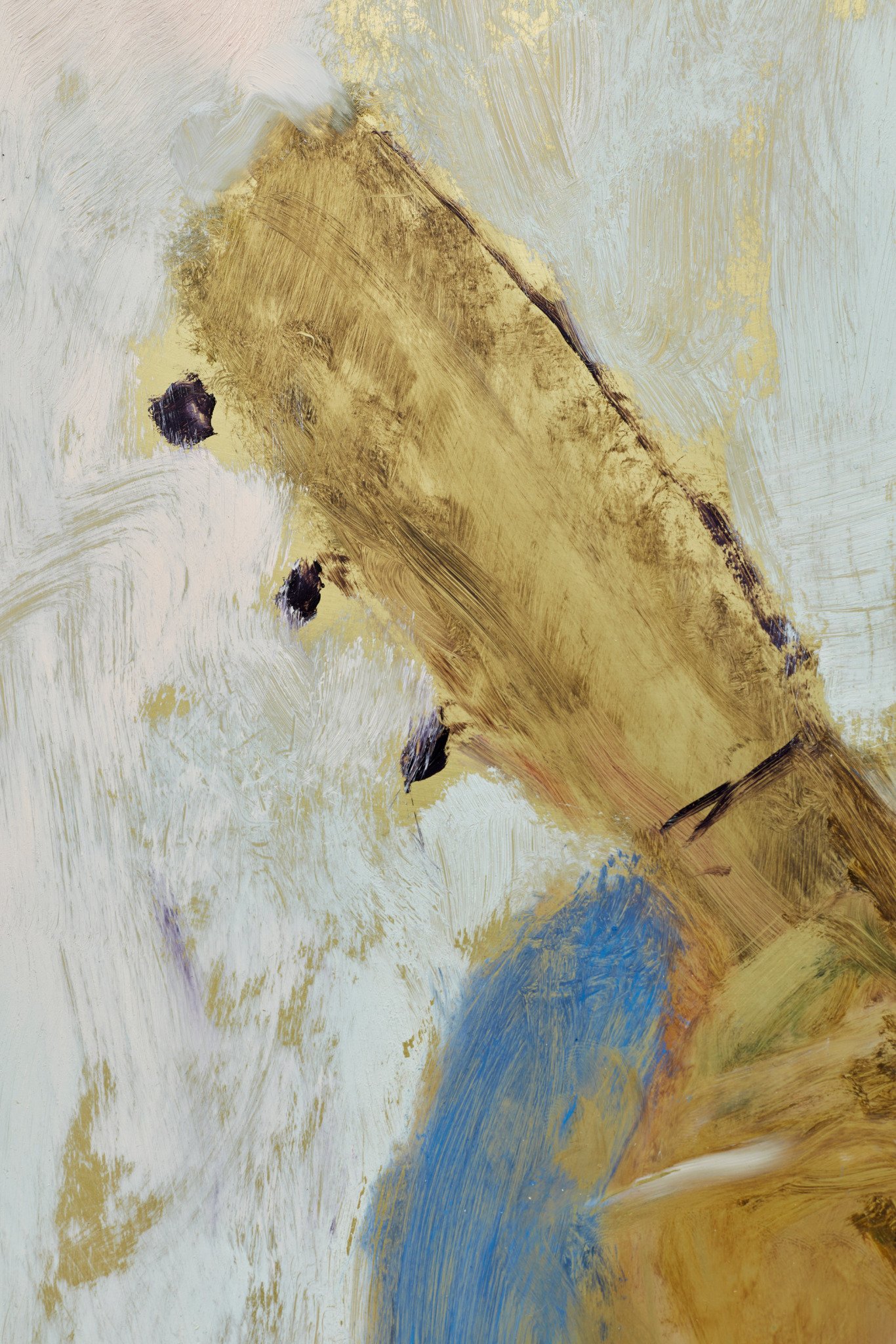
These works are beautiful in a quasi-classical sense, which, as Sonia D’Alto points out in her essay on the artist, can also be a way to counter the medium’s past instead of embracing it. Wasserman’s first solo show with François Ghebaly will open in Los Angeles next month. The US gallery will soon inaugurate a Parisian space, confirming the French capital’s increasing relevance in the art world today.
Marin Majic’s solo booth at Nino Mier
In an age of “zombie figuration” for emerging painters, the question is how the previous generation still deals with representation. The painting of Marin Majic (b. 1979) is a compelling response. His solo booth at Art Brussels with Nino Mier features a dozen small-scale works on canvas, hung on a green-walled room, which the visitor had to enter by making space through plants blocking the door. These depictions of dream-like scenes seem to state how figurative painting still has a justified place in the discourse over representation: certain subjects are exclusive to the medium, and there is only a limited amount of things photography can imitate.
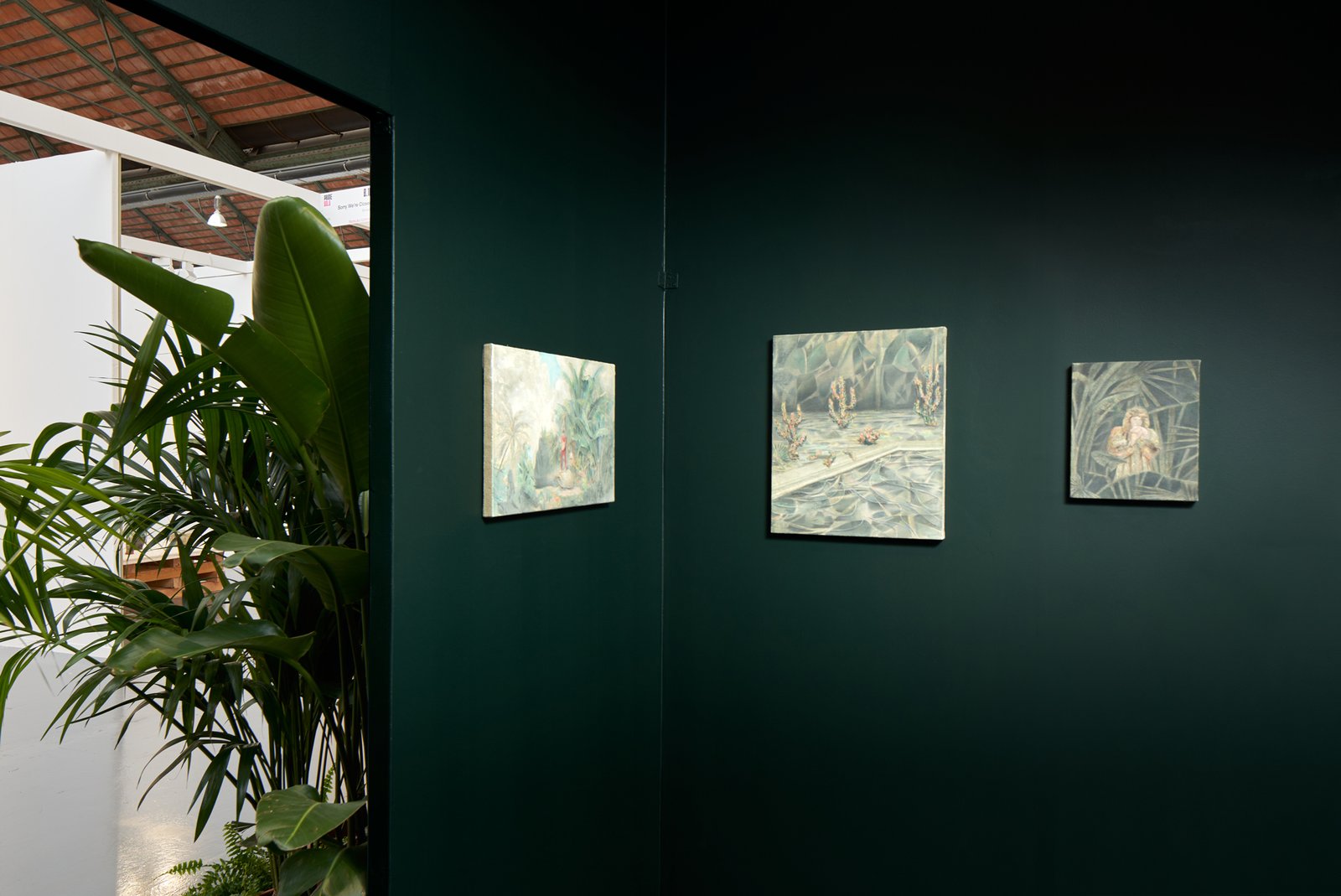
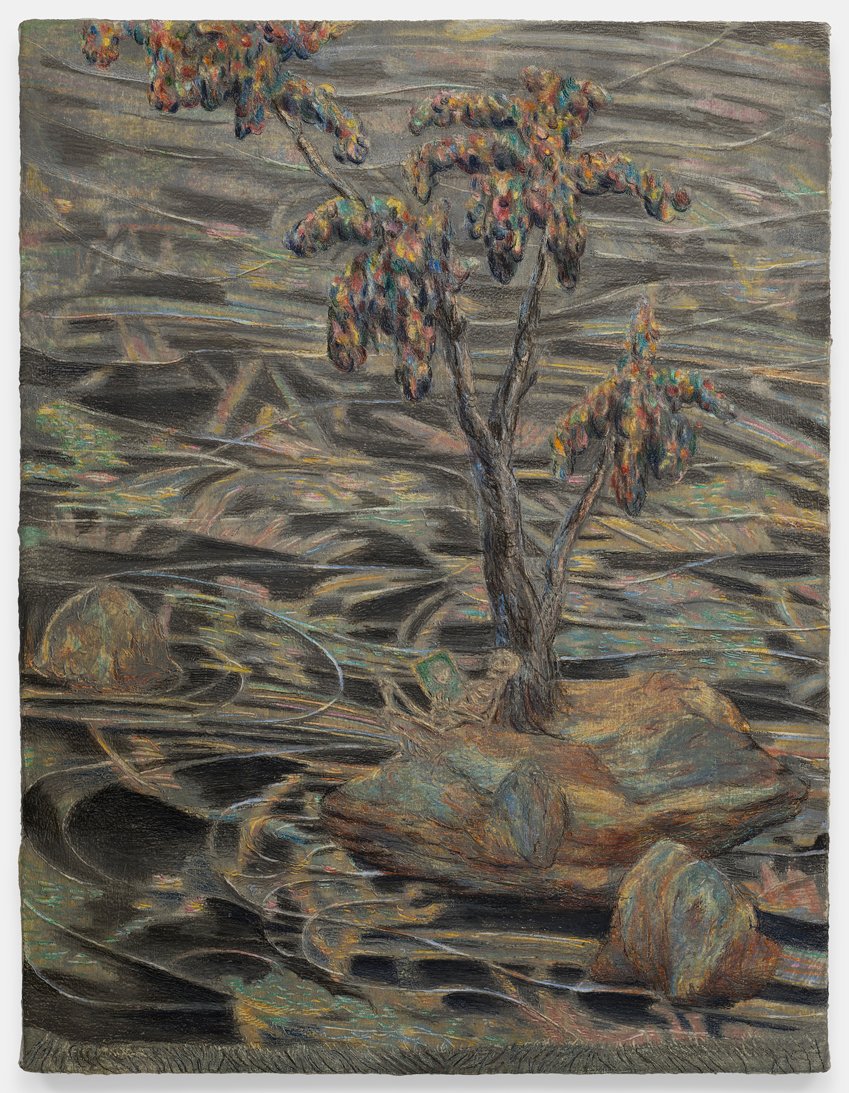
Majic’s works suggest painting’s autonomy, not unlike the divisionists and pointillists sought to do more than a century ago. Painting needs to be itself, or at least the one of its author—Majic’s color palette has a clear and recognisable identity rooted in technique: it is produced with marble dust, oil, wax, and turpentine, dominated by the various shades between green and grey on which he gives shapes to subjects with brushes and pencils.
October 5, 2022

